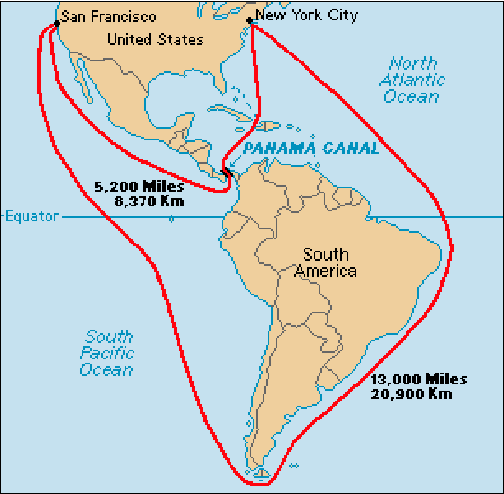The Panama Canal stands as a testament to human ambition, innovation, and collaboration. Spanning the narrow isthmus of Panama, this engineering marvel has played a pivotal role in shaping global trade and connectivity for over a century. From its inception to its modern-day significance, the Panama Canal’s story is one of extraordinary feats and strategic foresight.

The idea of a canal cutting through the Isthmus of Panama to connect the Atlantic and Pacific Oceans dates back centuries. However, it was not until the late 19th century that serious attempts were made to turn this vision into reality. The French led the initial endeavor under the leadership of Ferdinand de Lesseps in the 1880s. However, due to financial woes, engineering challenges, and rampant disease among workers, the project faltered, leaving the dream of a transcontinental waterway unfulfilled.
The United States entered the scene in the early 20th century, recognizing the geopolitical and economic significance of a canal linking the two oceans. With support from the U.S. government, Panama declared its independence from Colombia in 1903, paving the way for American involvement. The Hay-Bunau-Varilla Treaty granted the U.S. control over the Panama Canal Zone, securing the necessary land rights to proceed with construction.

Despite the challenges, the canal was completed and opened to maritime traffic on August 15, 1914. Its completion marked a historic moment in global transportation, revolutionizing maritime trade by providing a shortcut between the Atlantic and Pacific Oceans. Ships no longer had to endure the treacherous journey around the southern tip of South America, significantly reducing transit times and costs.
Throughout the 20th century, the Panama Canal remained a vital artery for international trade and military strategy. It played crucial roles during both World War I and World War II, facilitating the movement of Allied naval forces and supplies between the Atlantic and Pacific theaters. The canal’s strategic significance underscored its importance as a geopolitical asset for the United States and its allies.
In 1977, under the Torrijos-Carter Treaties, control of the canal was gradually transferred to Panama, culminating in Panama assuming full control on December 31, 1999. Today, the Panama Canal continues to serve as a vital link in global maritime trade, accommodating thousands of vessels annually and generating significant revenue for Panama.

From direct involvement in construction to political maneuvering and profitable ventures, the USA’s impact on the Panama Canal has been profound and multifaceted.
Direct Contributions:
- Construction Efforts: The most direct involvement of the USA in the Panama Canal was its leadership in the construction phase. Under the guidance of Chief Engineer John Stevens and later Colonel George Washington Goethals, American engineers oversaw the monumental task of excavating the canal, constructing locks, and managing the logistical challenges of the project.
- Investment and Financing: The United States provided significant financial backing for the construction of the canal, facilitating the acquisition of land rights, procurement of equipment, and support for labor forces. American investors and the government played a crucial role in funding the ambitious endeavor.
Indirect Contributions:
- Diplomatic Pressure: Prior to direct involvement, the USA exerted diplomatic pressure on Colombia to secure the rights to build the canal. When negotiations with Colombia failed, the USA supported Panama’s bid for independence, leading to the signing of the Hay-Bunau-Varilla Treaty, which granted the USA control over the Panama Canal Zone.
- Public Health Initiatives: The USA implemented public health measures to combat diseases like malaria and yellow fever, which plagued workers during construction. These efforts helped mitigate health risks and ensure the project’s continuation.
Political Maneuvering:
- Acquisition of Canal Zone: Through diplomatic negotiations and political maneuvering, the USA secured control over the Panama Canal Zone, a strategically significant territory for canal construction and operation. The Hay-Bunau-Varilla Treaty and subsequent treaties solidified American control over the region, shaping its political landscape for decades.
- Geopolitical Influence: The presence of the Panama Canal in the USA’s sphere of influence bolstered its geopolitical standing in the Western Hemisphere. Control over the canal enabled the USA to project power and maintain strategic dominance in maritime trade routes.
Profitable Ventures:
- Economic Benefits: The USA derived substantial economic benefits from its involvement in the Panama Canal, both during construction and after its completion. The canal facilitated the flow of goods and resources between the Atlantic and Pacific Oceans, stimulating trade and commerce.
- Revenue Generation: Following the transfer of control to Panama, the USA continued to benefit from the canal’s operation through revenue-sharing agreements and commercial ventures. American companies and interests remain prominent stakeholders in the canal’s management and operation, contributing to its profitability.
The USA’s role in the Panama Canal, spanning direct construction efforts, indirect contributions, political maneuvering, and profitable ventures, underscores its significance as a transformative endeavor in engineering, diplomacy, and commerce. The legacy of American involvement in the Panama Canal continues to shape global trade dynamics and maritime transportation networks, highlighting the enduring impact of strategic infrastructure projects on international relations and economic prosperity.
